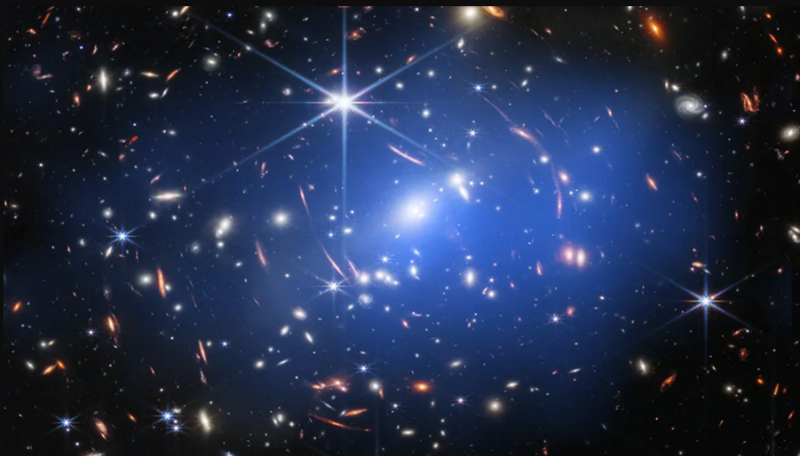
USA: The highly anticipated, billion-dollar James Webb Space Telescope from NASA arrived in its gravitational safe zone, one million miles from Earth, in January. It started to make us gasp in July.
Amazing glimpses of a shimmering universe began to appear one by one on our screens, each one somehow more beautiful and thought-provoking than the last. However, I'd contend that the telescope's groundbreaking works will always hold a special place in our hearts.
Also Read: Released image of Dart spacecraft colliding with an asteroid
The Carina Nebula's toffee-hued cliffs and Stephan's Quintet's fairy-dusted galaxies will always be remembered as the JWST's and our first dances in deep space. On the other hand, the organisation was able to improve some of those fantastic JWST starter images thanks to information gathered by NASA's Chandra X-ray Observatory.
with results that are positively electrifying.
Here are updated versions of the slightly more recent Cartwheel Galaxy portrait, the deep field SMACS 0723.3-7327, the Stephan's Quintet, and the Carina Nebula from the JWST image set No. 1.

analysing JWST images 2.0
President Joe Biden presented Webb's First Deep Field, also known as the first JWST treasure, to humanity on July 11. (and formally known by its robot name, SMACS 0723.3-7327).
Let's first focus on the 2.0 version of this glittering exhibition.
Also Read:Nasa’s Dart spacecraft strikes asteroid in test of defense against killer space rocks
My jaw dropped like one of those comic book cartoon animals when I first laid eyes on this deep field after NASA's absurdly long delay in revealing it, which was oddly accompanied by ambient chillhouse music.
You are not looking at stars, but rather galaxies that are 4.2 billion light-years away.
Einstein's general relativity predicted the phenomenon that led to the image's warped streaks in the centre, which serves as visual evidence for the paradigm-shifting theory.
However, Chandra added to SMACS 0723.3-7327 a startling signature of superheated gas coming from many of those galaxies—gas that can only be seen in X-rays and is therefore invisible to the JWST's infrared-focused sensors.
This gas, which appears as a blue haze evaporating from the centre of the image, has a mind-boggling mass of approximately 100 trillion times that of the sun and can reach temperatures of tens of millions of degrees Celsius. The gas reservoir may even be several times more massive than each galaxy in this cluster, according to NASA estimates.
Realizing how large this area is compels you to consider how far into the deep field it actually extends.
The following group of five celestial realms is Stephan's Quintet, which is composed of four of them connected by gravitational auras.
According to NASA, this image contains red, orange, yellow, green, and blue streaks that are JWST data. You can see galactic gas trails and developing baby stars speckling the dark background of space coded in these tones.
However, Chandra X-ray data is responsible for the piercing baby blue highlight at the galactic intersection, which is in the exact centre of this image.

The observatory discovered a shockwave that, according to NASA, is released as one of the galaxies passes through another at a speed of 2 million miles per hour and heats gas to tens of millions of degrees. The organisation also highlights some infrared data that the JWST uses, which was captured by NASA's now-retired Spitzer Space Telescope in the colours red, green, and blue.